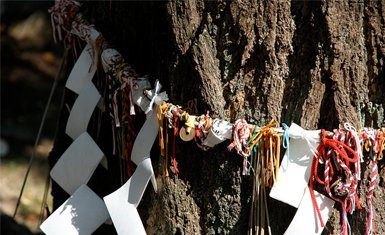Hatsumode is one of the most beautiful celebrations of the entire year, as it is about welcoming the New Year in a spiritual place and connecting with divinity from day one. Every year Japan dawns with crowds visiting Shinto shrines and Buddhist temples to pray for safety and prosperity throughout the coming year. This occasion is known as Hatsumode (literally, “first sentence”). Many people dress up in kimonos and lively line the streets lined with food stalls. It is generally celebrated from the first day of the year until January 3.
After midnight on December 31, large crowds gather at the largest shrines such as the Tokyo Yasukuni Shrine and Meiji Jingu. At first, it started in Tokyo, but after the opening of the railway in the Meiji Period, residents from all over the place would come to Tokyo or the famous nearby shrine for the Hatsumode. Little by little, it has become an important culture in Japan.
Shinto shrines are the most visited for this occasion, but Buddhist temples are as well. As Japanese cultural celebrations use elements of Shinto and Buddhist traditions, Shinto shrines (jinja) and Buddhist temples (otera) are popular places to celebrate the New Year.
It is common to wear fine clothing for the occasion of paying homage to the consecrated deity. Therefore, it is a time when both women and men can wear kimono. New Year is ideal to go out in traditional Japanese clothes.
What can you compare in the sanctuary and temples.
Most shrines and temples offer omikuji (fortune receipts). It is usual to buy one to predict your luck in the next year. The omikuji costs around ¥ 100, and he draws a random number that he exchanges for a corresponding fortune. On the paper receipt is written your general level of fortune (for which there are 5-7 different levels) and, more specific information about your perspectives in various aspects of life, including work, romance and health. Good fortunes are often kept, while bad fortunes can be tied up in a designated place in the temple or shrine to pray for better prosperity. Some larger temples and shrines have omikuji in English.
There is also the experience of writing the first Ema of the year. Ema is a wooden tablet that generally has a design with the animal of the year or the sanctuary. The first prayer of the year is written on this tablet (it can be in any language), and it is hung on the seals of the sanctuary in a suitable place.
Some shrines offer sake samples from different prefectures in Japan in exchange for a very small donation to the shrine. This donation does not have a specific price.
For visitors in Japan in the early days of the year, it is highly recommended to participate in the Hatsumode at a Shinto shrine.


